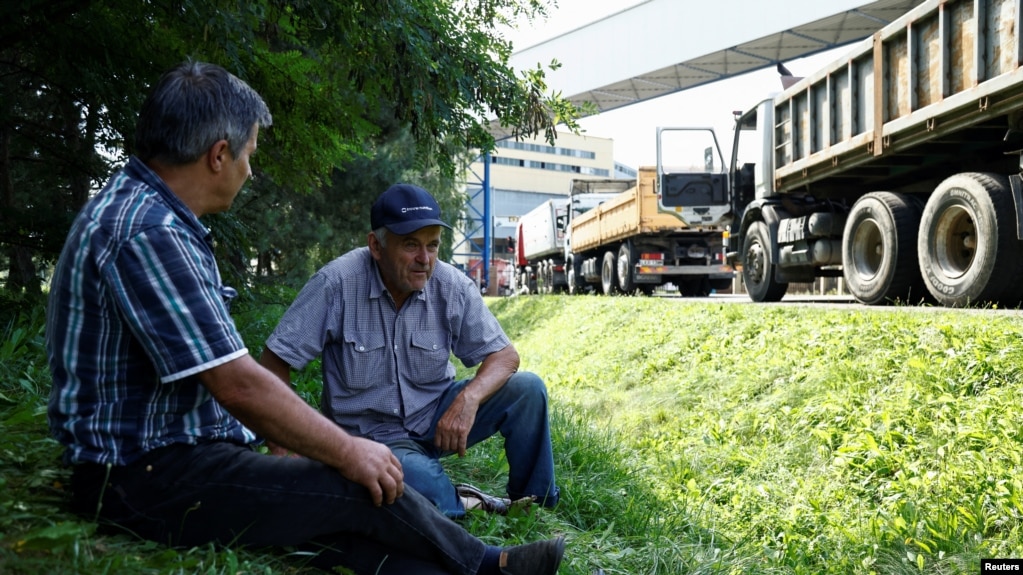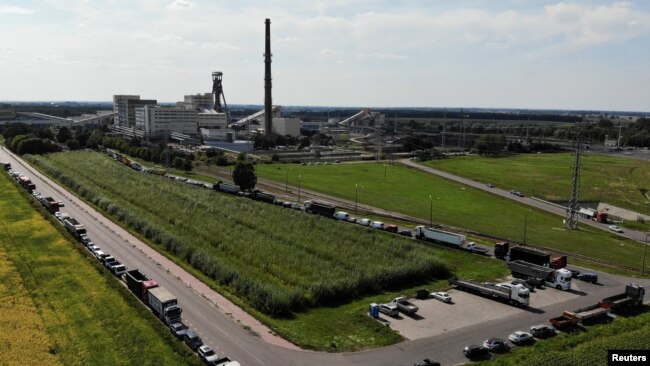Diamond magnate appeals Swiss corruption verdict
By AFP
Published August 27, 2022

Steinmetz, previously sentenced to five years behind bars for corruption linked to mining rights deals in Guinea, insists he is the victim of a "big injustice" -
Copyright AFP/File Christophe ARCHAMBAULT
Nina LARSON
French-Israeli diamond magnate Beny Steinmetz will be back in court in Switzerland on Monday to appeal against a corruption sentence linked to mining rights in Guinea.
A Geneva court convicted the 66-year-old businessman in January 2021 of setting up a complex financial web to pay bribes to ensure his company could obtain permits in an area estimated to contain the world’s biggest untapped deposits of iron ore.
He was sentenced to five years in prison and also ordered to pay 50 million Swiss francs ($52 million) in compensation to the canton of Geneva.
Steinmetz maintained his innocence throughout that trial and immediately appealed against the ruling, decrying it as a “big injustice”.
Two of his alleged co-conspirators, who were slapped with shorter jail terms, are also appealing.
Steinmetz has changed his legal and communications team for the appeal, and they are preparing to argue that the lower court had not fully heard his arguments and had misunderstood the situation.
The first trial had painted Steinmetz in a way that “does not at all correspond to reality,” his spokesman Marc Comina said in a document detailing the diamond magnate’s case.
Far from being corrupt, Beny Steinmetz Group Resources (BSGR) had legitimately obtained the mining rights in question, and had striven in difficult and complex circumstances to set up an operation that would have benefited Guinea’s national interests, the document said.
– ‘Pact of corruption’ –
Swiss prosecutors painted a far different picture during the first trial, which was the culmination of a drawn-out international investigation that kicked off in Switzerland in 2013.
They accused Steinmetz and two partners of bribing a wife of the then Guinean president Lansana Conte and others in order to win mining rights in the southeastern Simandou region.
The prosecutors said Steinmetz obtained the rights shortly before Conte died in 2008 after about $10 million was paid in bribes over a number of years, some through Swiss bank accounts.
Conte’s military dictatorship ordered global mining giant Rio Tinto to relinquish two concessions to BSGR for around $170 million in 2008.
Just 18 months later, BSGR sold 51 percent of its stake in the concession to Brazilian mining giant Vale for $2.5 billion.
But in 2013, Guinea’s first democratically-elected president Alpha Conde launched a review of permits allotted under Conte and later stripped the VBG consortium formed by BSGR and Vale, of its permit.
To secure the initial deal, prosecutors claimed Steinmetz and representatives in Guinea entered a “pact of corruption” with Conte and his fourth wife Mamadie Toure.
Toure, who has admitted to having received payments, has protected status in the United States as a state witness.
She and a number of other key witnesses in the case failed to appear in the first trial, and it remained unclear if they would attend the appeal.
– ‘Totally false’ –
Steinmetz, who lived in Geneva during the years when the bribes were allegedly paid, continues to maintain that the bribery allegations are “totally false”, according to the document released by his team.
It insisted that Rio Tinto had lost the rights to half of its concessions in Simandou over its failure to develop them, in accordance with Guinean mining laws, and that BSGR later legitimately bid for and obtained the rights.
There was “nothing illegal or arbitrary” about that decision, the document said.
It also argued that the lower court had misunderstood the nature of the deal with Vale, and that BSGR had wanted to create a lasting partnership and business in Guinea.
“BSGR never intended to leave Guinea once the partnership with Vale was signed,” it said.
“Had it not been driven out of the country, BSGR would still be operating in Guinea today and would be a major player in the country’s economic rise.”
Steinmetz, who was granted a legal free-passage guarantee in order to participate in the first trial, left Switzerland without serving his sentence.
He will be back in the Geneva court from Monday to argue his case after receiving another free-passage, with the appeal hearing due to last through September 7. The verdict will come at a later date.
French-Israeli diamond magnate Beny Steinmetz will be back in court in Switzerland on Monday to appeal against a corruption sentence linked to mining rights in Guinea.
A Geneva court convicted the 66-year-old businessman in January 2021 of setting up a complex financial web to pay bribes to ensure his company could obtain permits in an area estimated to contain the world’s biggest untapped deposits of iron ore.
He was sentenced to five years in prison and also ordered to pay 50 million Swiss francs ($52 million) in compensation to the canton of Geneva.
Steinmetz maintained his innocence throughout that trial and immediately appealed against the ruling, decrying it as a “big injustice”.
Two of his alleged co-conspirators, who were slapped with shorter jail terms, are also appealing.
Steinmetz has changed his legal and communications team for the appeal, and they are preparing to argue that the lower court had not fully heard his arguments and had misunderstood the situation.
The first trial had painted Steinmetz in a way that “does not at all correspond to reality,” his spokesman Marc Comina said in a document detailing the diamond magnate’s case.
Far from being corrupt, Beny Steinmetz Group Resources (BSGR) had legitimately obtained the mining rights in question, and had striven in difficult and complex circumstances to set up an operation that would have benefited Guinea’s national interests, the document said.
– ‘Pact of corruption’ –
Swiss prosecutors painted a far different picture during the first trial, which was the culmination of a drawn-out international investigation that kicked off in Switzerland in 2013.
They accused Steinmetz and two partners of bribing a wife of the then Guinean president Lansana Conte and others in order to win mining rights in the southeastern Simandou region.
The prosecutors said Steinmetz obtained the rights shortly before Conte died in 2008 after about $10 million was paid in bribes over a number of years, some through Swiss bank accounts.
Conte’s military dictatorship ordered global mining giant Rio Tinto to relinquish two concessions to BSGR for around $170 million in 2008.
Just 18 months later, BSGR sold 51 percent of its stake in the concession to Brazilian mining giant Vale for $2.5 billion.
But in 2013, Guinea’s first democratically-elected president Alpha Conde launched a review of permits allotted under Conte and later stripped the VBG consortium formed by BSGR and Vale, of its permit.
To secure the initial deal, prosecutors claimed Steinmetz and representatives in Guinea entered a “pact of corruption” with Conte and his fourth wife Mamadie Toure.
Toure, who has admitted to having received payments, has protected status in the United States as a state witness.
She and a number of other key witnesses in the case failed to appear in the first trial, and it remained unclear if they would attend the appeal.
– ‘Totally false’ –
Steinmetz, who lived in Geneva during the years when the bribes were allegedly paid, continues to maintain that the bribery allegations are “totally false”, according to the document released by his team.
It insisted that Rio Tinto had lost the rights to half of its concessions in Simandou over its failure to develop them, in accordance with Guinean mining laws, and that BSGR later legitimately bid for and obtained the rights.
There was “nothing illegal or arbitrary” about that decision, the document said.
It also argued that the lower court had misunderstood the nature of the deal with Vale, and that BSGR had wanted to create a lasting partnership and business in Guinea.
“BSGR never intended to leave Guinea once the partnership with Vale was signed,” it said.
“Had it not been driven out of the country, BSGR would still be operating in Guinea today and would be a major player in the country’s economic rise.”
Steinmetz, who was granted a legal free-passage guarantee in order to participate in the first trial, left Switzerland without serving his sentence.
He will be back in the Geneva court from Monday to argue his case after receiving another free-passage, with the appeal hearing due to last through September 7. The verdict will come at a later date.











